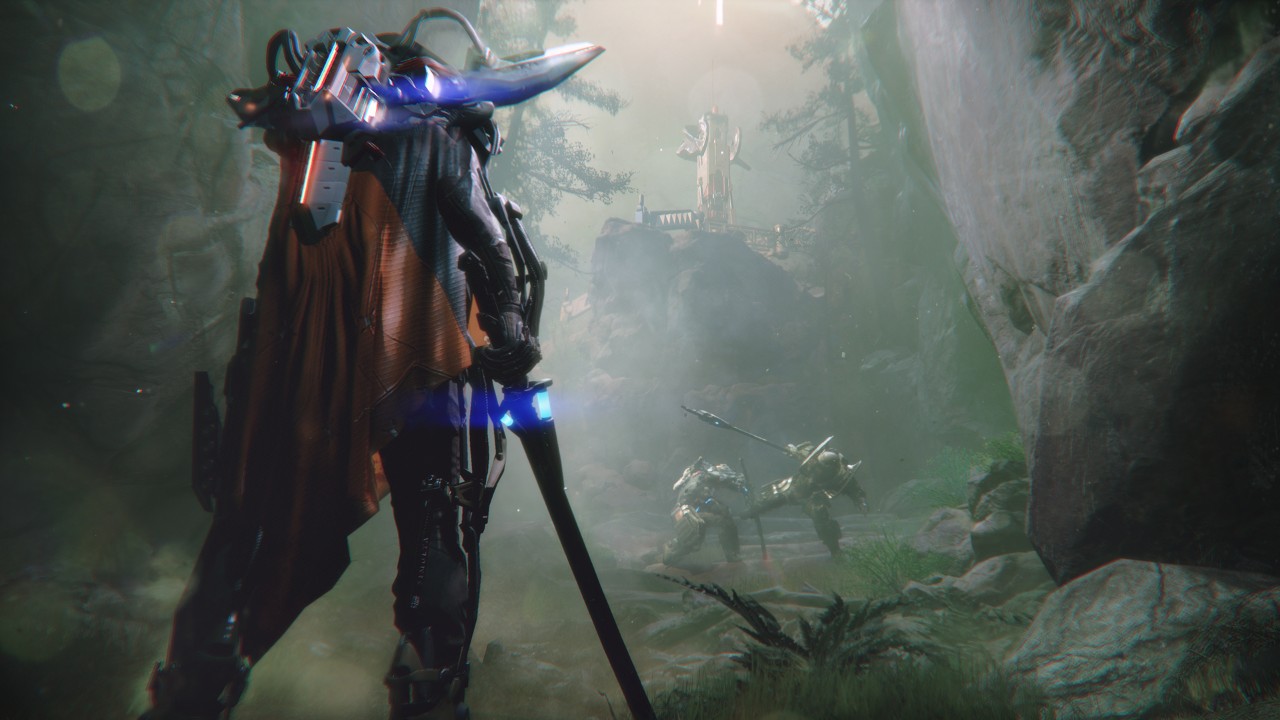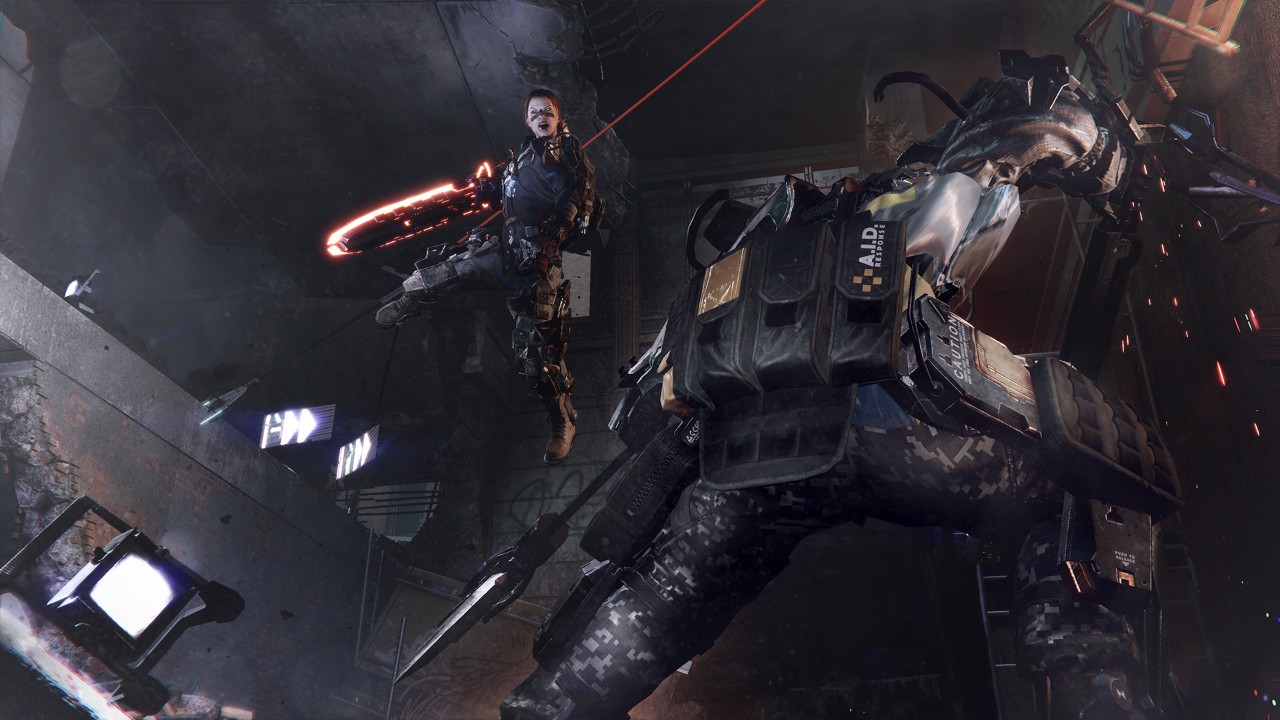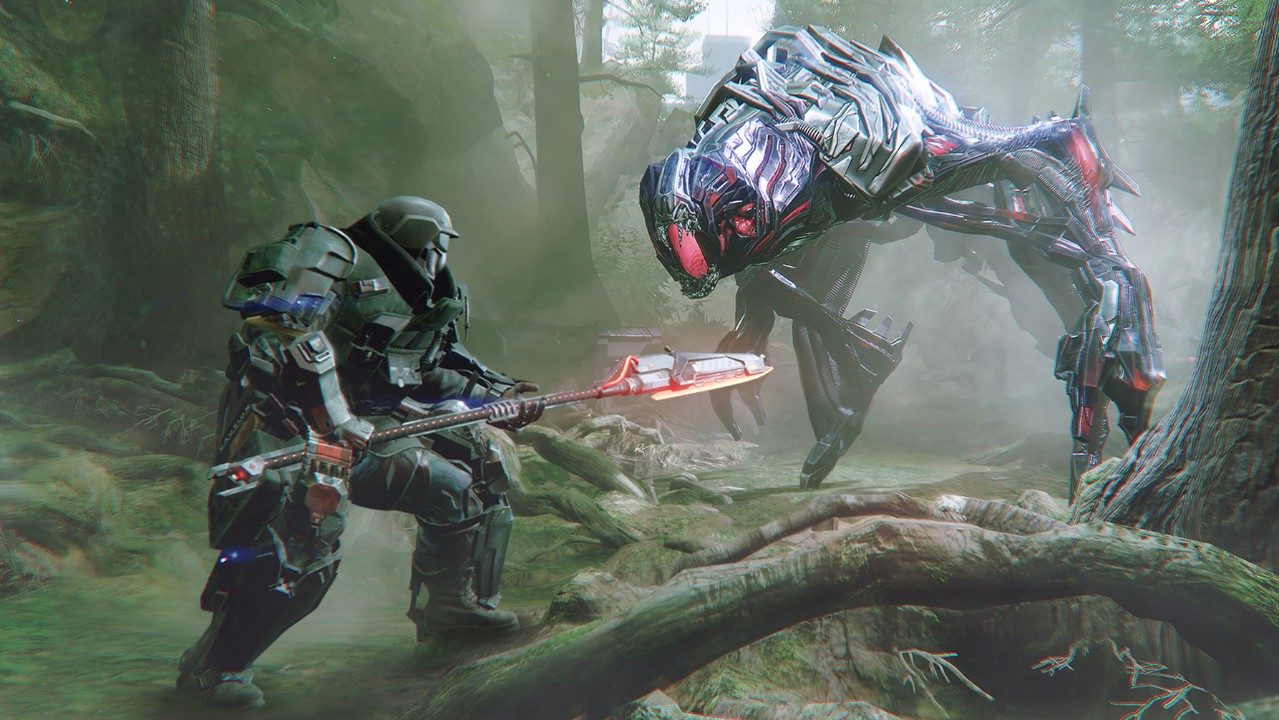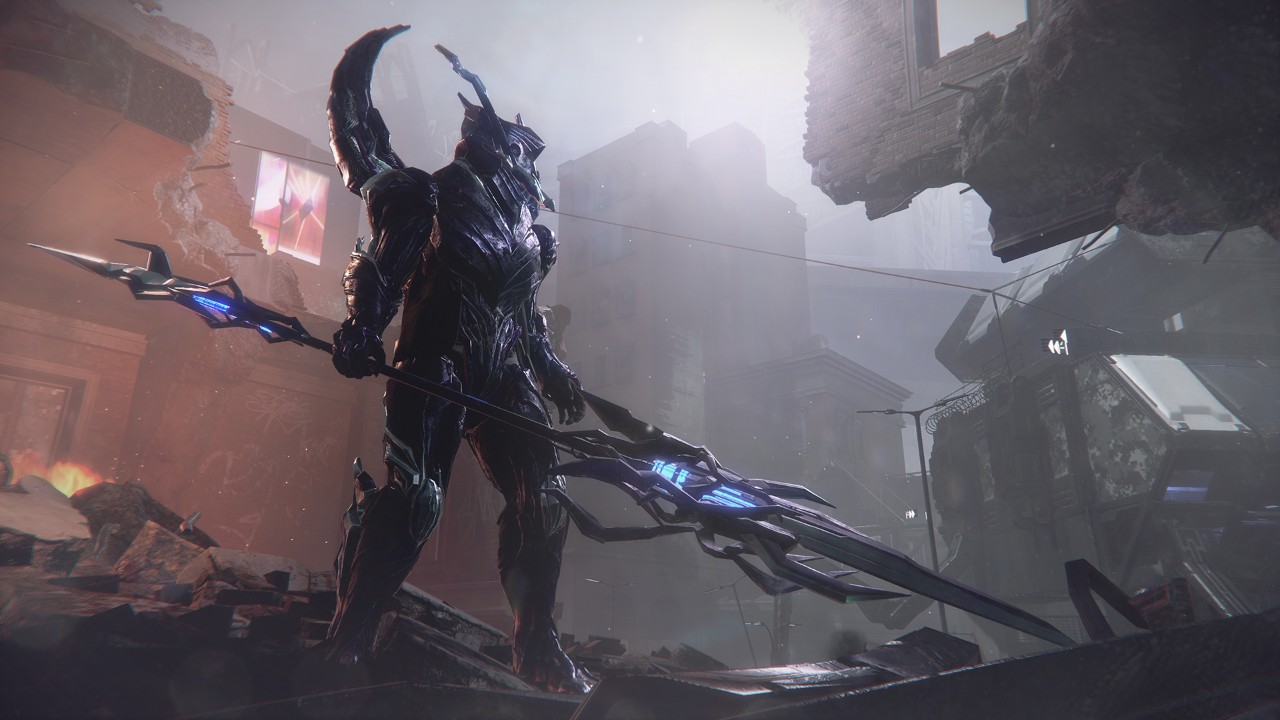The Surge 2 is what happens when a developer belligerently strikes forth to prove their worth, and Deck 13 largely succeeds in doing so.
Back in 2014, Deck 13 Interactive released ‘Lords of the Fallen’, and game that shamelessly borrowed from the Dark Souls school of design, right around the time “Soulslike” was a burgeoning term for the growing genre. The game had…issues, to be polite. For every new idea the game had, there were five existing ideas hamfisted into the game. The world felt like a direct clone of Lordran, with the same dark gothic overtures as From Software’s classic. The combat was clunky and laggy, a crushing issue within a genre that relied on measured, tactical combat. As a first outing Deck 13 tried, but they missed the mark far more than they hit it.
Rather than roll credits and call it quits, Deck 13 pressed on with the release of The Surge in 2017, a sci-fi influenced Soulslike with intuitive crafting, a setting that stood apart from its peers, and a substantially improved combat system that revolved around strategic dismemberment. Compared to Lords, The Surge was an absolute revelation; a sign Deck 13 could learn from community feedback and critique. The game, however, was still far from perfect; the environments all bled together, boss fights were few (and not exactly well designed) with trash mobs often proving deadlier, and it was all tied together by a threadbare story filled with plot-twists so obviously signposted a sci-fi neophyte could predict them. The Surge was an improvement, sure, but it felt like Deck 13 was still finding its footing.
If the first Surge was Deck 13 proving they could listen to feedback, then The Surge 2 is proving that the third time’s the charm: better in almost all regards, but still recognizable under the vast array of improvements.

Welcome to Jericho City
The Surge 2 takes place two months after the events of the first game, when the ethically dubious tech conglomerate CREO’s nanobot loaded rocket was destroyed by leading man Warren as it launched. Rather than reach the upper atmosphere, where the “nanites” would go about reversing climate change at the expense of damn near all life, they instead rained down over Jericho City, the new and infinitely better setting of The Surge 2. Of course, this led to social decay, chaos and eventual quarantine to keep the “Defrag Virus” (an infection derived from the nanites) in check. No one in; no one out.
It’s a good thing your now custom-crafted main character happened to be on Flight 221, which was struck by debris from the exploding CREO rocket and crash landed within the city. Players wake up from a coma within the medical ward of Jericho City’s police department with a foggy memory, low-cut hospital gown, and twin defibrillators strapped to their hands to better deprive the other inmates of their lives. It’s a bog-standard sci-fi opener, and I can’t fault anyone rolling their eyes upon starting the game. However, once the initial tutorial is over and the player is deposited within Jericho City proper, the game blossoms into something truly fantastic.

A Better, Deadlier World
Jericho City is a winding, vertical maze full of survivors, looters and crazed cultists. It’s Deus Ex by way of Fallout, a neon-laced calamity of crumbling buildings, police roadblocks and failing infrastructure in the wake of the nanite storm building overhead, a dark violet reminder that things have gone very, very wrong. It is in this early level where you cut your teeth on the familiar yet improved combat, with smarter enemy placements ensuring each death is not only fair, but less about being dog-rushed by every enemy within range simultaneously; an issue the first game suffered from.
Jericho City has some of the best level design within a game, period. The map peels back on itself, with logical routes lining every zone. Every corridor, every building; everything feels intelligently connected within The Surge 2. There are wider combat spaces where the smarter enemies don’t all leap onto you like you’re Piper Perri on gangbang night, where you can dance and kite effectively and draw enemies into engaging you on your terms. Instead, enemies now work in tandem, sometimes with one in the back taking pot shots at you as their cohort bleeds you of your stamina. Better enemy AI and placement go a long-way in making each area of the map feel like a minor combat arena than a death-slog, unlike the first game’s corridors of death. There are also collectibles littered everywhere, rewarding the most attentive explorers with scrap, loot, and lore-heavy audiologs.
Even environment variety has been spruced up from the first game, with each zone having its own identity and set of unique enemies. Gideons’s Rock is a wildlife park infested with nanite beasts, cloaked mercenaries and golden statues with a penchant for murder. Port Nixon is a run down port taken over by transhumanist cult Children of the Spark who worship their mysterious namesake. The music fades in, and while never bombastic, works to augment each area of the city and provide a touch of personal flavor. Each zone feels unique, with a clear theme tying it together, and more shortcuts back to the bonfire-esque Med-Bays than you’d assume at first glance. Even some light Metroidvania flourishes from two pieces of equipment you find in game further open this maps wide open to exploration and repeat trips.
If there is one draw-back, however, it is the limitations that come from being a more “grounded” sci-fi setting. The Surge 2 does not suffer from this problem near as much as the first game, but there is only so much you can do with the setting. Sure, the nanites make for some spectacle, but in the end, Jericho City still falls firmly under the “dilapidated city” design aesthetic. It’s a shame, considering what the nanites are capable of within the game’s lore. While there is a shift later in the game that spices things up, it would have been cool to see a zone that lean harder into the nanite-infested side of things. Nonetheless, what Deck 13 does with the world is admirable, but if players were expecting more fantastic or outlandish settings they better temper their expectations.

Top of the Line Combat
A well designed world would be for naught if there wasn’t something fun to do within it, and that is where The Surge 2 absolutely crushes other games of its ilk. Combat still revolves around attacking your enemies with either horizontal or vertical attacks to build up a battery bar, where a fully charged segment allows you to dismember your opponent for their armor, weapon, or implants. Armored body parts have a visible shield icon on them that now decays as you attack that limb, better highlighting the damage you are doing and if you are close to breaking it. You can still attack blue unarmored limbs for faster kills, but will miss out on acquiring equipment or crafting materials.
It’s the same well thought-out dance of risk-reward, incentivizing more tactical play than out-right button mashing. This would mean nothing, of course, without the context of what has changed: better animations, smarter blocking, and a drone that can now be used more freely and be augmented to better match your build. Combat animations in The Surge 2 are some of the crunchiest, bloodiest symphonies of violence in a video game: as if Issac Clark of Dead Space fame decided to put down the cutter and instead rage-punch the limbs off everyone he ever met. There is no shortage of meaty bludgeoning, torso’s being kicked clean off, and legs being pulled off as if they’re delicate insect legs. Every weapon has unique animations tied to the type of attack and limb, which keeps the combat visceral from the early hours till the very end. It’s some of the best animation work I’ve seen in a game, and makes every encounter something you look forward to.
That’s not to mention how fluid it all is. Dash attacks, dodge-counters, jump/crouch dodging for a counter; all of this combines flawlessly with the new Directional Block that allows you to risk eating the entirety of an attack for the chance to parry an opponent’s attack and follow-up with a devastating attack of your own. Factor in the ability to block full damage at the cost of stamina, and you have a wealth of combat options to play with, before you even factor in the various weapons, armor sets, and implants.
Equipped for the Job
Each of the nine weapon variants – four of which being new to The Surge 2 – have unique animations and attack combos, lending each a distinct feel in battle. Like dashing in and out of combat: try the Twin-Rigged weapons. Want to pummel your enemies into a fine puree of gore: use Heavy Duty weapons. Or, if you prefer, meet in the middle with the trick-style Double Duty weapons that act as heavy, stagger weapons with slow presses of the attack button, but split into stamina-hungry flurries of speed when the button is pressed rapidly. With every weapon having its own set of vertical and horizontal attacks, plus newly added charge attacks, the weapons alone could carry a lesser game. Furthermore, the nine weapon classes in The Surge 2 each have combos that have cost less stamina when executed properly.
Throw into this grab-bag of evisceration armor sets with gameplay affecting stat bonuses, resistances, and now an additional three-set bonus to pair with the full six-set bonus, and you can build your character precisely around your preferred style of play. I’ve always been a fan of stomping into battle with heavy armor, stocky single-hitters, and a refrigerator door strapped to me arm, face-tanking my enemies while staggering them with my swings. I can do that in The Surge 2 by wearing heavy Goliath-class armor with high stability (preventing me from staggering), a massive Heavy-Duty weapon, and speccing my talent points into stamina and health to better block and soak. It works wonderfully, and by endgame I was an indomitable force of wrath marching down the streets, bowling down anyone bold enough to attack me.

Every Tool Has a Place
Now capstone all of this with implants and your drone. Leveling in The Surge 2 not only ups your suits energy consumption, allowing you to install different armors and implants, but now gives you two talent points to spend among Health, Stamina, and Battery, thus freeing up the implant system to be as weird as it wants to be. No longer do you have to return to a checkpoint to re-slot hardwired implants to move those stats around, but instead you now pay a modest fee to reorganize those talent points. This allows implants to not only focus on the various passives and active abilities one would want to use in their build, but they can now all be freely swapped around from anywhere within the game.
You can plug in injectables – The Surge 2’s consumables – to give you an edge in combat for the price of a fully charged bar of battery. Your primary heal works off this, and if you wanna stay healthy, you need to press the attack and accumulate battery charges. Consumables all work this way: attack to build up battery, use the battery to trigger the injectable, or bank an injectable charge for later by holding down the injectable button. These injectable implants round out the combat loop nicely: do you go for the dismemberment even though you are low on health, or do you burn the battery charge and fight another day?

You can also install passives via implants that make your damage increase at low health. Deck 13 has also rolled in soft-difficulty tuning via the implants, allowing players to enable or remove different UI elements at a whim. Confession time: I am terrible at parrying, but there was a mod that would show which direction and enemy’s attack was coming from. It came at a steep five energy cost, but I was able to directionally block and stagger enemies far more frequently. Those who are comfortable reading enemy attacks won’t ever need this implant, but its there for scrubs like myself; it’s a fine middle-ground for balancing difficulty within a genre notorious for being harder than diamond.
Finally, add in your drone, which no longer uses battery charges. Instead it uses ammo, which can be bought from vendors in the hub areas or lopped off of enemies the same way crafting components are. See ammo on someone’s leg? I guess it’s your leg (and ammo) now. By moving to ammo, The Surge 2 allows the drone to become a more active tool in your kit, with a gaggle of different upgrades and weapons for it lying around to either find, or forcefully retrieve from soon-to-be dismembered foes. That heavy armor build I mentioned above: throw in the sniper drone and now I’m breaking armor before dashing into an opponent, shortening the engagement. I can use incendiary grenades, stationary turrets: the drone is a much more useful gadget in The Surge 2 than it ever was in the first game.
Throw all these ingredients into what is perhaps the most intuitive UIs within the genre, and everything is easy to grasp. You can min-max your builds with easy to parse information on one page, see exactly what you need to upgrade your equipment the next, and browse your implants on another. The combat loop is made all the more satisfying because the core UI doesn’t fight you along the way, instead empowering you to make intelligent choices about what to equip, how to upgrade it, and how to augment around it. Pair this with an easy to understand and intuitive crafting system that allows you to downgrade higher tier materials for lower tier ones, and you’ll find every piece of equipment is not only viable, but easy to level up if it fell behind.

More to Love
Bosses are another area Deck 13 has improved, with The Surge 2 offering not only more dastardly foes to take on than there were in the first game, but better fights overall. The first boss required I take out five coolant tanks on his mech, with optional arms that would provide an upgraded version of the boss’s weapon if taken out. The fight has well-telegraphed attacks, multiple threats to balance (such as taking poison damage if I tried to sit under him too long), and a well-measured pace. If anything was off about the fight, it was how sticky the camera was to the coolant on his legs. The camera performs admirably throughout the game, but this encounter and a few other bosses were the only times I’d say the camera was biting off more than it could chew, trying to spastically follow the boss as he moved around the arena.
The other fights follow this mantra, with only the human-based fights proving the weakest. That’s not to say they were bad; they were actually rather well done as well, but they lacked the spectacle of conquering some large, impossible monstrosity. All the bosses have clear mechanics that don’t rely on new gimmicks not seen elsewhere in the game, instead leaning into The Surge 2’s combat strengths, such as tying dismemberment to easing a fight by removing certain attacks from the boss’s rotation. All in all, bosses were a fun challenge this time around with few frustrations.
Can’t Always Bat 1000
There is one large issue I had with the game, despite all my gushing: the main story. The main narrative has your character tracking down a little girl named Athena, another survivor of the Flight 221 crash. Fine, nothing too inventive, but fine. Where the story falls apart is in its hamfisted attempt to force a villain into the narrative. The “sudden, but inevitable betrayal” that starts the antagonist’s arc is groan inducing with how obvious it is, and the story does nothing to improve this character’s position in the story. The game tries to fake you out by pivoting to a second antagonist, but ultimately the plot twists prove too blatant for any of it to stick.
To Deck 13’s credit, the narrative is more cohesive in The Surge 2 than it was in the first game, but it still feels very paint by numbers. It’s a shame, considering most of the audiologs do a decent job adding to the game’s lore and world-building. But, like the narrative, even those have issues when they try and make the main bad compelling. The story also can’t decide whether it wants to be a serious take on trans-humanism and the pitfalls of relying on technology, or a schlocky B-movie full of absurd action-movie machismo. It’s not bad by most accounts, but it’s not good either. The story exists to get you from Point A to Point B, and to provide a frame in which the lore scattered across the game can rest. In those pursuits it works, but barely.

The Verdict
The Surge 2 is an exceptional Soulslike, with top of its class combat, stellar level design and a crafting system that makes experimenting fun and simple. Where the game falters it doesn’t do so tragically, instead being victim to its devout adherence to its more grounded setting and mediocre-at-best story. Where The Surge 2 has improved over its predecessor it has done so by leagues, and anyone looking for an aggressive Soulslike will absolutely enjoy their time here. Deck 13 has proven that third’s a charm, and The Surge 2 stands as one of the best games in the genre this year.











Published: Sep 23, 2019 04:59 pm